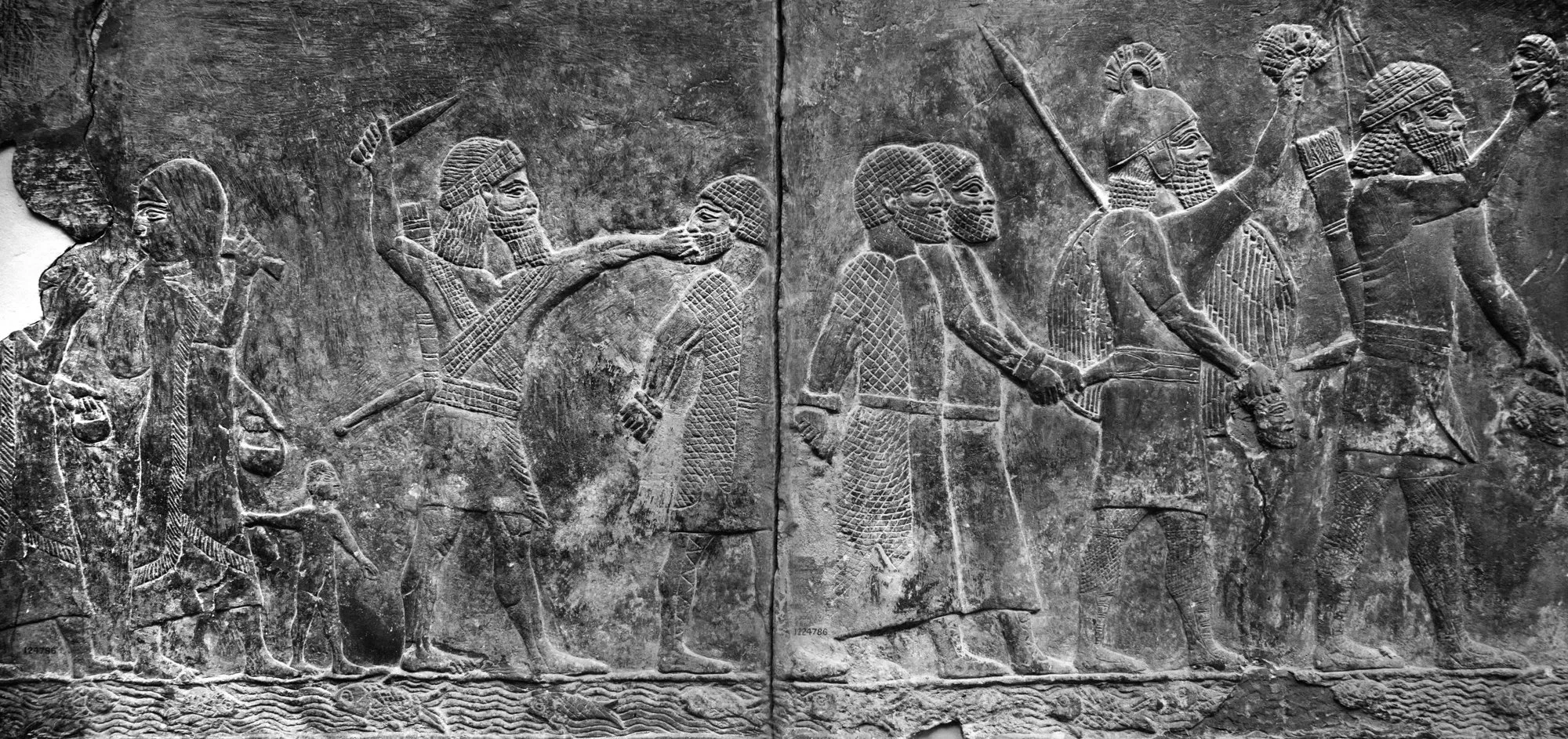Assyrian soldiers carry beheaded heads of their prisoners from the town of "-alammu", reign of Sennacherib, 700-692 BC. From the South-West Palace at Nineveh, in modern-day Iraq. The British Museum, London.
On August 10th, 612 BC, the ancient metropolis of Nineveh suffered a dramatic fall, as recorded in the historiographical text "ABC 3" from ancient Babylonia. At that time, Nineveh held the distinction of being the largest city in the world and served as the capital of Assyria. This significant event marked what historians now refer to as the "First" Fall of Nineveh, a pivotal moment in ancient history. The "second" Fall of Nineveh occurred in 2015, marked by further destruction inflicted by ISIS.
The decline of the Assyrian Empire began with the instability following the death of King Aššurbanipal in 631 BC, coinciding with the Babylonians' loss of independence. Around 627 BC, Nabopolassar, a Babylonian general, emerged victorious over the Assyrians near Babylon, marking the beginning of the Babylonian Empire. However, Nabopolassar's aspirations extended beyond liberation; he sought to dismantle the capital cities of Babylonia, including the religious center at Aššur and the administrative hub at Nineveh. To prevent this shift in power, the Egyptians provided military support to Assyria.
By July 616 BC, Nabopolassar secured a victory against Assyrian forces on the banks of the Euphrates. However, faced with the encroaching Egyptian army, he retreated. Seizing the opportunity amidst the unrest, the Medes, a tribal federation residing in modern Iran, took control of Nineveh by the end of the following year.
Nabopolassar forged a strategic alliance with the Medes king Umakištar (Cyaxares), and the joint Medes-Babylonian army launched an invasion of Nineveh in May 612 BC. The city ultimately fell in July, culminating in extensive looting that persisted until August 10th, as noted in historical records. This event reverberated throughout the ancient world and was even reported by the distant Greek poet Phocylides of Miletus, underscoring the magnitude of Nineveh's destruction.
Artist’s impression of Assyrian palaces from The Monuments of Nineveh by Sir Austen Henry Layard, 1853. — image in the public domain.



